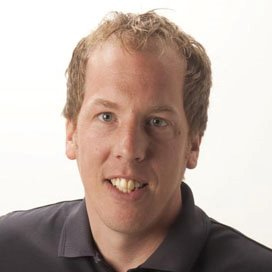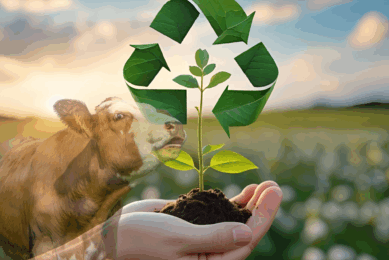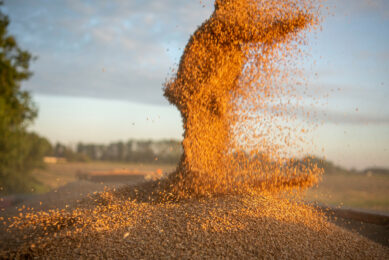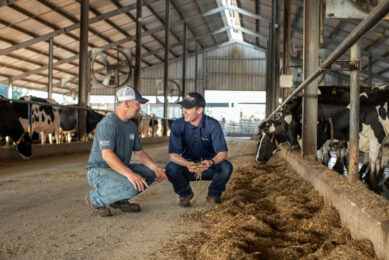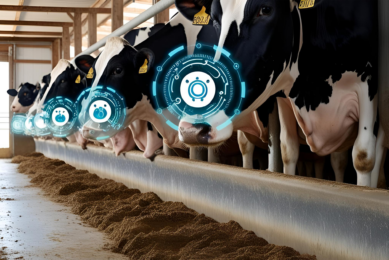Dairy Global talks with awarding winning US dairy Holsum Dairies
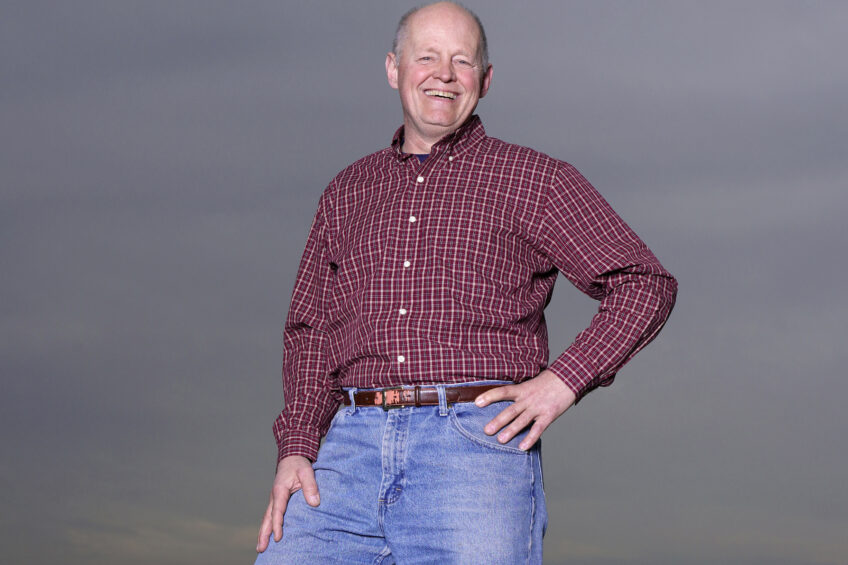
Holsum Dairies received multiple awards for its efforts to combine sustainability and profitability. Co-owner Kenn Buelow likes to connect all the dots between all the different systems on a farm and enjoys when a plan comes together.
Kenn Buelow took a gamble when he started Holsum Dairies in Wisconsin, a state that was typically seen as a stronghold for traditional family dairy farming. “People were anxious. It was new and at the same time, the largest dairy farm in the state,” says Buelow. The reason behind starting the dairy farm, was so he could finally put his own advice as a veterinarian into practice. In the years before he advised several large dairy farms in California and New Mexico. “But dairy farmers do not always carry out your advice,” he says laughing. Despite his extensive experience, the start-up of a new dairy farm was not easy. Fortunately, his investors gave him the time. After two years, the farm became profitable and successful.
|
What were the biggest issues when you started Holsum Dairies?
“The biggest issue was managing employees. In the area, there were no large dairies, so employees didn’t really know what to do. You had to set-up all the systems and protocols and that took a couple of years. Our staff first spent a month on our older dairy. So it’s all about getting your management and systems in place. And that’s hard when you are dealing with 4,000 cows. But the more systems you put together, the more profitable you can be if all the systems match.”
Where do you find your employees?
“They often start out as milkers. All our maternity people started as milkers. If they show initiative and involvement we offer opportunities for growth and we train them internally. We have about 75 fulltime, or probably more than fulltime, employees. Only a few of them came with a degree. Up until two years ago it was very easy to find new employees. Since then it has been getting harder. But that is the same for more industries in the US, such as construction and service work. There are just too many vacancies a lot of competition. So, we have raised our salaries in the last couple of years. We wish the government had a better immigration policy, where people could get work permits and come over. We have work, we have people that need work. It would solve a lot of problems. But we have a congress and president that will never look at that solution.”
Why did you choose to start with 4,000 cows?
“We think 4,000 cows is optimum. This doesn’t mean we are right, but we think so, and for us it works well. It’s only about efficiency, even in cow dairies. You need to put systems together. Manure- and feed management, working with farmers, all those systems is what makes it fun.”

How did your fellow dairy farmers look at you when you built your first large dairy farm?
“Dairy farmers were worried and questioned: ‘how are we going to compete?’But that went away after 5 or 10 years. We work with 35 local farmers for crops and manure going back on their soil. We make sure they make more money by selling crops to us instead of selling grains somewhere else. Otherwise why sell it to us? Beside that, land prices have gone up probably, at least 6-fold, so if they want to sell their land it’s worth a lot more now.”
Is it always possible for you to pay a higher price per hectare?
“Yes, not very high but more than they would make. We try to make it US$ 50 an acre, so that is about € 100 a hectare more than what they could make. We have to keep this promise. So sometimes grain prices are so low that they are still losing money but they are not losing as much. We meet every year with the farmers we work with. Than we tell them what price we are going to pay for corn, alfalfa etc. And then we give them from April 1st until September 1st to lock in that price. So they look at the Chicago price, and if it’s going up they wait or it’s going down, they lock in.”
You did all the planning, the design of the facilities and training. Did the investor give you carte blanche?
“Pretty much. I was really happy and excited at first and then when we had all the problems I was really fearful and thought what the heck did I do? The first dairy was an investment of $ 23 million but actually it didn’t work so well at first. We spent money where we shouldn’t, some things didn’t work. But our investor gave us time to fix those things and we became very successful. We became profitable in 2 years.”
Is Holsum Dairies your ideal dairy farm?
“Dairies keep getting better. And you start with what you think is the best. For example, we don’t have tunnel ventilation and maybe we should have one? But that wasn’t known very well when we started. If we could do it again, we would do it the other way cause it takes less space and gives a nicer environment for cows and better fly control. So there are still issues.”
One of your goals was to sustainably produce quality milk at the lowest possible financial and environmental cost per litre. Where is your cost price compared to dairy companies in the region?
“We are in the top 10% in lowest cost of production.” We make money with investments in sustainability. You look and think what can be sustainable. Usually it’s using less things. And if you use less, like teat dip, that’s more sustainable or filling tanks. Or cooling our milk with plate coolers, so we use the groundwater temperature to cool, hence reducing electricity. You have to invest but at the end it will save you money in the long term.”
But investing is easier for you because your investor gave you cart blanche.
“Sure, that’s always easier. But we work with a lot of sub-budgets and collect, analyse and report on continuous information for planning and control by management. To establish the payback time. For example, we make our own teat dip for pre-dip and we earned back the investment on the equipment needed in 6 months. Or take our grain store, most dairies just build a lean-to but we enclosed it. As a result no grain was blown away and we have less spoilage. This was also a quick return on our investment.”
How do you stay focused on items that can be improved?
“We train our people, put good systems in and talk with our people a lot. In addition, I walk around the dairy and just look and see. Once every 3 weeks I sit down with key people like the manager, the herdsman and so on. We are there to serve our employees cause they are doing the work. And we are just trying to make their work easier and get things they need so they can do a good job.”
What’s the biggest challenge on your dairy farm right now?
“Finding good staff to get the work done. Because good people are hard to find. Also partners we worked with retire. Some of them want to sell their farm and ask us to buy the land, but we don’t really want to do that. So making those kind of decisions.”
Why don’t you want to buy the land?
“Cause it’s expensive, you don’t make money on land. The prices are way too high. In 1980 prices dropped in halve in the US. So that’s a little bit of a risk. We only own 10%, about 500 hectare, of the land that we get crops from.”
You did invest in digesters. How did this work out?
“Yes, we invested $ 2 million in two digesters. Again, it is about the economics of it and the sustainability – they are not separate. The first digester although was very painful. It took probably 10 years to break-even on that one cause it took so long to get it running right. The second one we had our capital back in probably four years. Now we make money on the digesters although rates for delivering electricity on the grid dropped so we barely make money with it now. But I see it all as a system. We sell carbon credits on them. It helps us with our nutrient management, you get bedding, we do energy production and it helps with odours so our neighbours are happier.”
What’s your view on other countries, like the Netherlands for example?
“I think dairy farmers in the Netherlands have many serious regulatory challenges that make it very difficult to grow and be more efficient. And I’m not sure how they will meet all these challenges because it’s hard to manage if you don’t have the company size to hire specialist for everything. Regarding sustainability, I think it is important to decide in your own mind what is sustainable. Not what other people think. And then look for things you can invest in that improve your energy efficiency or reduce your water costs so that you know you are making money. Invest first in the things that deliver the most. And then work down the line. Don’t let other people tell you what sustainable is.”
Join 13,000+ subscribers
Subscribe to our newsletter to stay updated about all the need-to-know content in the dairy sector, two times a week.


 Profile
Profile